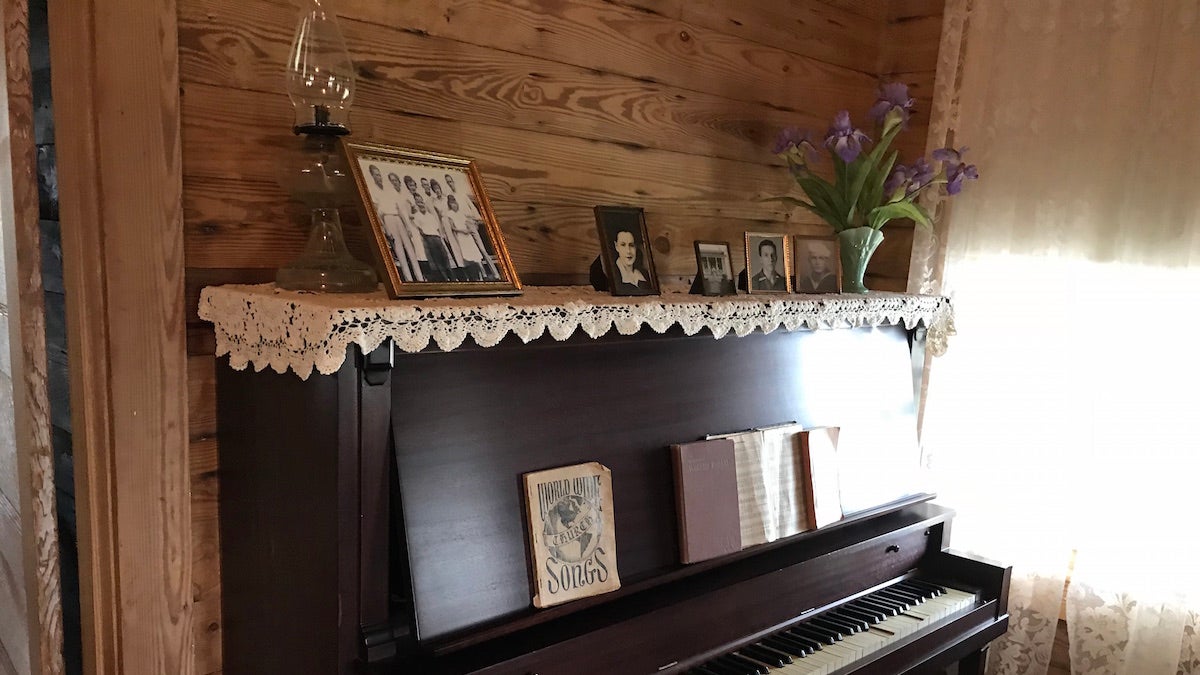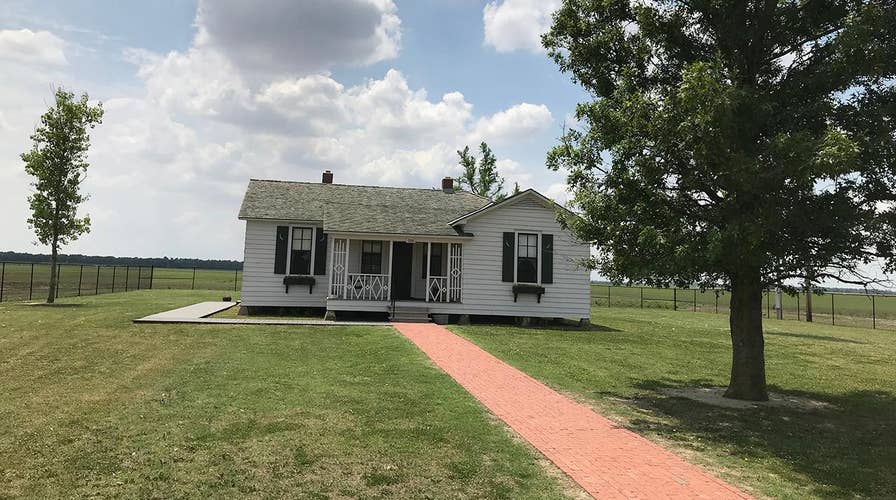Johnny Cash's childhood home gets national spotlight
Johnny Cash’s childhood home is being preserved for generations to come after being named to the National Register of Historic Places on May 4, 2018
DYESS, Ark. – In the middle of rural Arkansas, in a landscape dotted with farms and surrounded by vast, empty terrain, lies the boyhood home of one of America’s most iconic country music stars.
That house now has a place in the history books.
Johnny Cash, who was known simply as “J.R.” to the locals in Dyess, Ark., moved into Farm No. 266 with his family in 1935 when he was just 3 years old. The town only has 410 residents today but back then it was a thriving colony with skilled farmers made up of 500 families.
Earlier this month, the historic home became listed on the National Register of Historic Places after an extensive refurbishing process.
The Cash family home gives a peak into what life was like after the Great Depression.
The home has two bedrooms, one bathroom and common areas including a kitchen, den and dining room. Original wood paneling along with 1930s-style linoleum, which was called congoleum back in the day, decorates the floors. There are also items such as an old radio, a couch and a bathtub without plumbing. Essentially, the house looks as it did in 1935.

The Cash family piano is one of many original items on display at the Johnny Cash Boyhood Home in Dyess, Ark. The Cash family moved to Dyess in 1935 during the Great Depression. (Fox News)
But it wasn’t always in such good shape.
In order to qualify for the registry, Arkansas State University, which maintains and operates the site, had to completely revamp the tattered home, which had been sinking into the ground. ASU has controlled the site since 2011 and it shelled out $575,000 to buy and restore the property.
There were also previous renovations that had to be reversed in order to uncover the original building materials used in the 1930s. There used to be hundreds of homes just like it spread throughout the former colony.
“This house, to me, tells the story of the Cash family but it tells the story of hundreds of other families who may not have been as famous but still came here looking for a new start,” Edward Salo told Fox News.
Salo and a team of research students from Arkansas State Univeristy put together the application to get the old Cash home listed on the National Register of Historic Places.
The Cashes were just one of 500 families that relocated to the swamp-covered land.
Each family had to clear 18 acres to pay the government back for the home, which sat on a cleared two-acre plot. Clearing the land was hard, “back breaking” work, according to Ruth Hawkins, who is the executive director of Arkansas State University heritage sites.
The hardships that Johnny Cash and his family faced were a huge part of the inspiration behind many of his songs. Hawkins noted that Cash, who died in 2003, called the Dyess area ‘the promise land.’

A 1950 high school photo of J.R. (Johnny) Cash, who was vice-president of his class. Cash left Arkansas for Detroit shortly after graduating. (Arkansas State University)
“There are a lot of Johnny Cash’s songs that are directly influenced by growing up here in Dyess,” Hawkins said. “Songs like “Five Feet High and Rising,” are based on the 1937 flood. Songs like “Pickin’ Time” are based on his experience in the field picking cotton with his family. Or even hauling water to the cotton fields when he was too little to pick.”
Members of the Cash family were very involved in the restoration process, according to Hawkins. Some of the items in the home are actual items that the family owned at the time or similar-looking items that were donated by Johnny Cash fans.
“The original family piano is there, which is probably the most significant thing in the house,” Hawkins said. “Johnny’s brother and sister talk about how the family would come in from the fields at night and they would gather around the piano after supper and sing.”
The home attracts over 30,000 visitors each year, with many of them traveling from 58 different countries, according to organizers. There’s even a map with pins on it to highlight all of the visitors and Johnny Cash fans from around the world who visit.
There are plans to expand the site to include more buildings that were part of the original farmstead. There will even be a walking trail to connect the house with the center of town, which has a gift shop inside the old movie theater and a museum inside the old administrative building.
“We’re going to build an outhouse, a smoke house, a chicken coop and a barn just like the typical colony family had,” said Larry Sims, who is the facilities manager for the historic home.
Any expansion will require more funds and Hawkins noted that ticket and gift shop sales support the upkeep of the museum. But the biggest draw for funds will be the Johnny Cash Music Festival, slated to take place in fall of this year. The event will be hosted for the second time in a field that is adjacent to the old Cash home.
Although the Cashes moved out of the house in 1950s, the music and nostalgia of the era will still live on for many to see for years to come.


